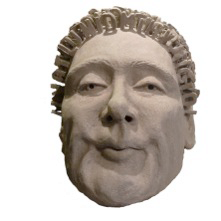
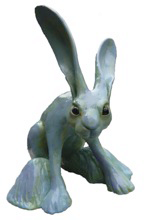
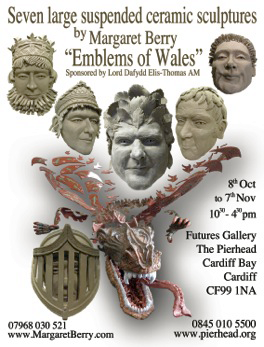
SEVEN LARGE SUSPENDED SCULPTURES “EMBLEMS OF WALES”
REPRESENTING WALES AND ITS PEOPLE
Sponsored by Lord Dafydd Elis Thomas AM
8th October to 7th November, everyday 10.30-4.30pm
“Draig” the ten-foot flying dragon has been
sleeping in a box since Margaret Berry’s
popular 2011 show in Mid-Wales at Cywain, Y
Bala and is on display until Novmber 7th. Draig
is in good company with a King, a Prince and
other characters drawn from 1500 years of
welsh history. Margaret specialises in
suspended sculptures and her chosen medium
is ceramic. The sculptures are all part lifelike,
part abstract.
“Emblems of Wales” was purposefully created
to fit the Welsh Assembly’s Pierhead building.
Margaret has created a set of six large
suspended sculptures to complement the
dragon on a theme of “representing Wales and
its People”.
Each of the historical, legendary famous characters is emblematic of Wales and each
sculpture is emblematic of the properties necessary to represent its people. The display
lasts for four weeks in the Futures Gallery upstairs at the Pierhead with full disabled
access. It continues until 7th November. Open daily, 10.30-4.30pm.
THE SCULPTURES
Each sculpture is slightly larger than life-sized at about 2m standing height or more.
Taliesin (500-542) “Poetic Inspiration”
The mythological and historical bard Taliesin composes
poetry in the company of his former changeling self: a fish, a
hare, a bird and a grain of corn.
Intentions, plans and method cannot be communicated
effectively without linguistic skill. Poetic inspiration both
captivates and motivates and is another piece of the jigsaw
of representing Wales and its
People.
This magical character of Welsh
legend and history blows
alphabetical letters into the air, the letters assuming greater
clarity as they leave his creative hands. The colours and textures
are delicate yet powerful and based on nature as his legendary
self was born from a potion of gathered plants.
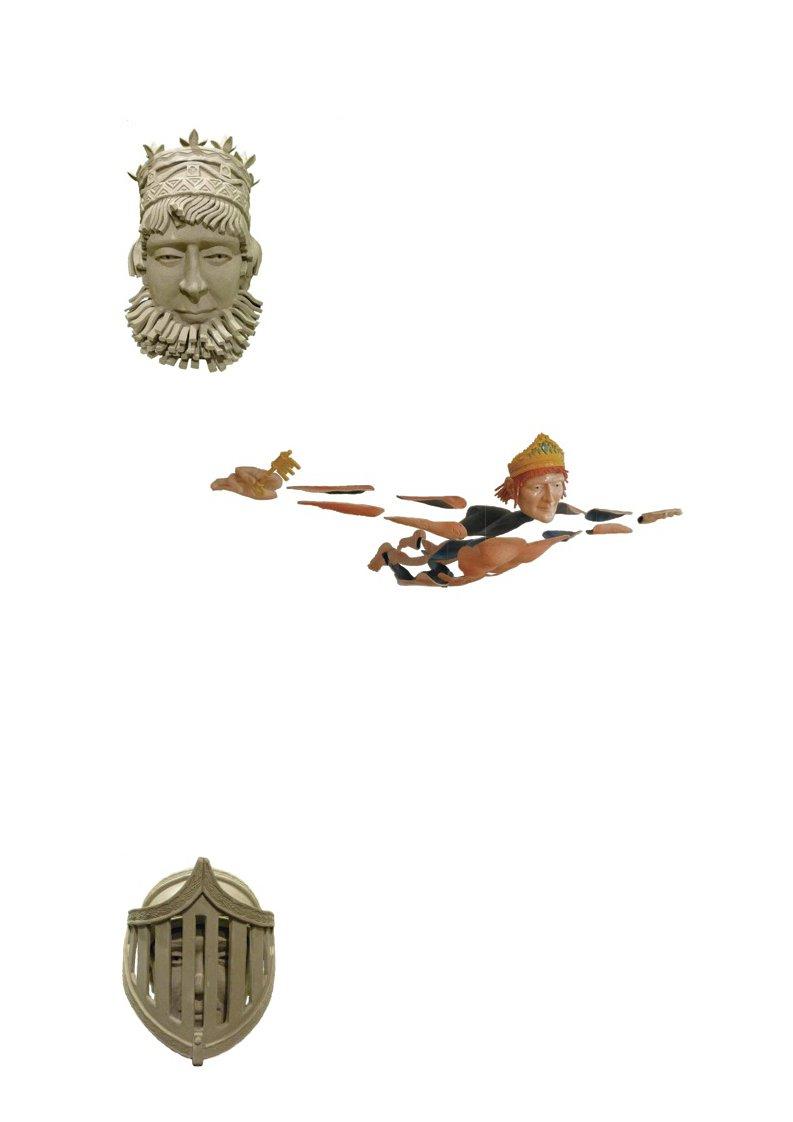
Hywel Dda (880-950) “Control”
Crowned Hywel Dda balances on a fulcrum, the spine
of an open book representing his book of law and a
sample of its Latin text aids his balance.
Unifying King Hywel Dda created consistency and
predictability by collating the many and various laws of
the Welsh counties and sought to produce a single set of
clear, consistent legal boundaries. These rules generated
confidence through trust.
Representation of Wales and its People requires a clear
and consistent set of ethical rules. Hywel Dda’s palette
and costume are derived from the book of his laws
recently bought by the National Library of Wales.
Llywelyn ap Gruffydd (1223-1282) “Independence”
An eight-foot tall skydiver plunges through the air yet delicately holds a key.
Royal through a right of birth, Llywelyn ap Gruffydd represents independence, strength
and vigour. He is so free and independent he doesn’t even need wings to fly and he holds
the universal key. Each and every person that is democratically represented should be
empowered through liberty.
His palette is selected from his heraldic colours and frescos painted during this period; his
long fingers are in the style of thirteenth century illustrations. His skin is inscribed with
the opening lines of “Marwnad Llywelyn yr Ail” gan Gruffudd ab yr Ynad Coch, bard to
the Welsh Court.
Owain Glyndwr (1354-1416) “Land Ownership”
A pensive armour-clad Owain Glyndwr considers stones
gathered from the varied and beautiful landscapes of the
Welsh counties.
Owain Glyndwr’s warring began in a dispute over land
ownership. This man of books found no justice in paper and
resorted to the sword. The sculpture considers the emotive
effects of land ownership. It is an implicit foundation of
representing Wales and its People.
Owain Glyndwr’s seal marks the ground he kneels upon,
golden and in his heraldic colours.
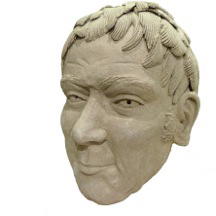
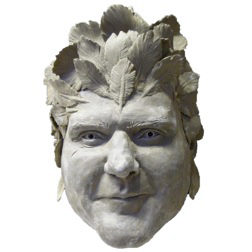
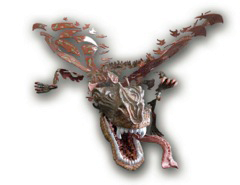
Robert Owen (1771-1858) “Social Principles”
Robert Owen, a mill owner and founder of the co-operative
movement is sat cross-legged, his shoes removed.
It is impossible to represent a People without a sound set of
moral principles. The represented people require ethical rules that
facilitate the progression of the individual to achieve self-
actualisation in a common goal.
Robert Owen noticed and addressed the imbalance of power. He
is depicted in period costume, cross-legged, shoes off, engaged in
debate, listening and discussing. His bust and muted palette are
derived from photographic and painted portraits.
Bryn Terfel (1965-) “Voice”
This larger than life Bryn Terfel soars in flight, his
wings outstretched.
The most effective communication is word of mouth
and communication is required to understand people’s
needs and problems. Communication is also needed to
propose, debate and improve suggested solutions. It is a
balance of talking and listening.
Bryn Terfel is depicted as the majestic yet agile kite so
common in the Welsh sky the bird’s whistle echoing in
the clear mountain air. This world-renowned singer is
an attentive listener yet his voice carries to many.
Draig
The symbol of Wales, its origin lost in the dragon’s breath of time.
The ten-foot part running, part flying dragon is red on the inside representing its spirit,
assuming character is more important than outward appearance. Additionally:
• There are miniature red dragons along the
length of its spine.
• Tongue symbols run the length of the spine
below the miniature dragons. These are the symbol of
the Welsh Language Society.
• The wings are in the colours of the Welsh
National flag: red, green and white, again adopting
the tongue pattern.
• Draig" is inscribed in the back of the dragon's
head.
Dragon was developed through eighteen months of drawings, prototypes and other studies
including two months of sculpting and a week to suspend it.
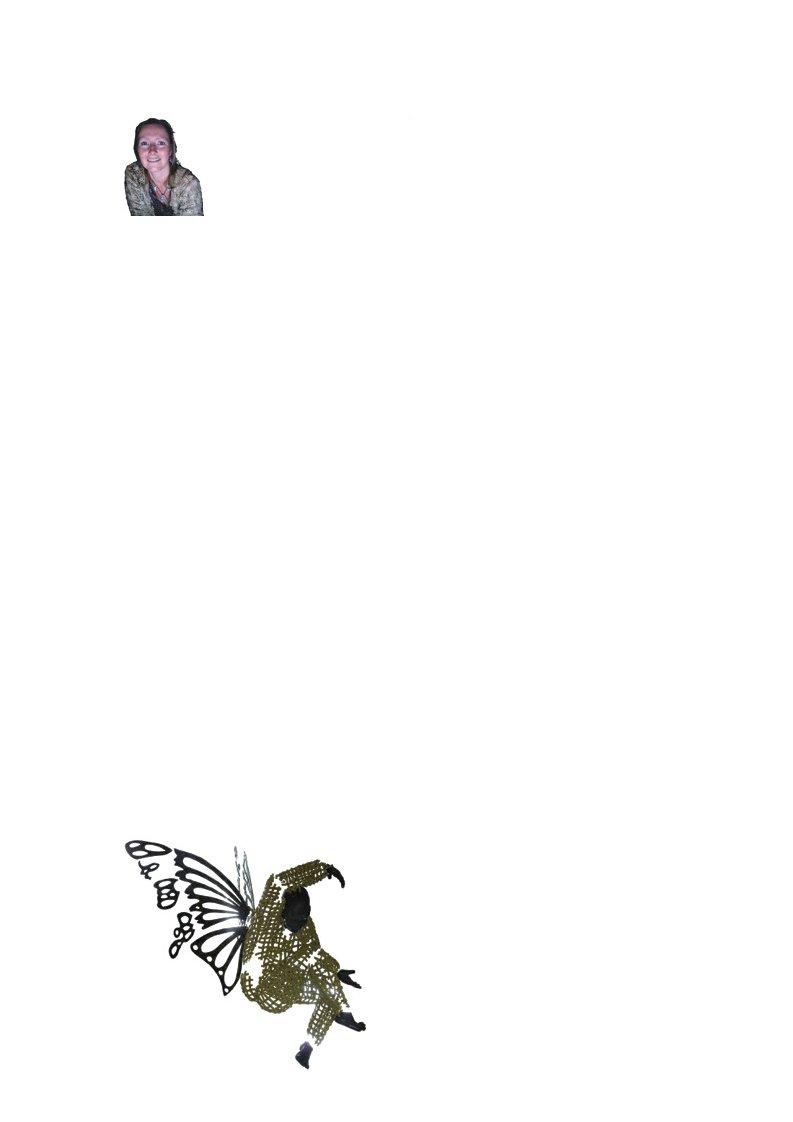
THE ARTIST
Margaret created her first suspended sculpture in 2005 winning Best of
Show with “Aspects of Love”. Her next suspended piece was sold to
hoteliers in Oberderdingen, Germany forming a centrepiece to the wooden
spiral staircase in their grand entrance hall. She also makes large sectioned
sculptures; Unicorn is the size of a small pony.
Margaret was born a five-minute walk from London’s Fulham Pottery into a loving
family and was encouraged to enjoy the arts. She learnt to draw with Salvidor Dali prints
on the wall, a piano in the lounge, “Love” on the record player and experiences of classic
painting and sculpture in some of London’s most prestigious galleries and museums.
At 16, she made two jointed suspended puppets - a second taste of her future. In the first
year of A’ level, she sculpted a clay head as an Italian bust frustratingly disposed of in the
school skip. At that time Margaret lacked confidence in her work and after the A’ level
course she stopped drawing.
She experimented with career paths from pea picker to administrator before completing a
Sheffield computing degree when she won the Freshgate Trust Award. “I loved the study
but loathed working in the IT arena. In retrospect I had some truly wonderful jobs but
they simply weren’t right for me” she says.
At night, after her day in the city, she would often look through the
Road Atlas of Great Britain and think of what might be. She had
assumed it was the job that was at fault but three fantastic IT jobs
later, drove to Machynlleth, Mid-Wales for the weekend. The next
day she rented an isolated stone cottage and resigned on the
Monday. Less than four months later she had found a six-week
drawing course and discovered that she could draw but her head
ruled that she stay with the sciences: she considered intelligent
prosthetic limb design but reflected that such a career would lead
back to a city life; in 2003 she was miserable as she qualified with
PGCEII(Sciences).
In 2005, she completed the exceptional Foundation Art
course at Coleg Menai in Bangor with full distinctions and
tremendous certainty that clay was the way forward. She
won an award with a suspended sculpture in 2005 and
bought her electric kiln a year later. She then finished
renovating her period cottage and started trading as a
sculptor in April 2009.
Ever since she was at school, people have asked
Margaret what she does for a living often adding
that they had thought her to be an artist… ……...
Margaret’s work is mostly sourced from Welsh
poetry, myths and legends adopting patterns and
textures found in nature.. ………...…………….
“I drove to
Wales on a
Friday, the next
day rented an
isolated stone
cottage and
resigned on the
Monday!”
“I listen to my heart when
I make decisions now and
I’m a lot happier. I like to
work with clay everyday
and miss it, even pine for
it when I don’t.”